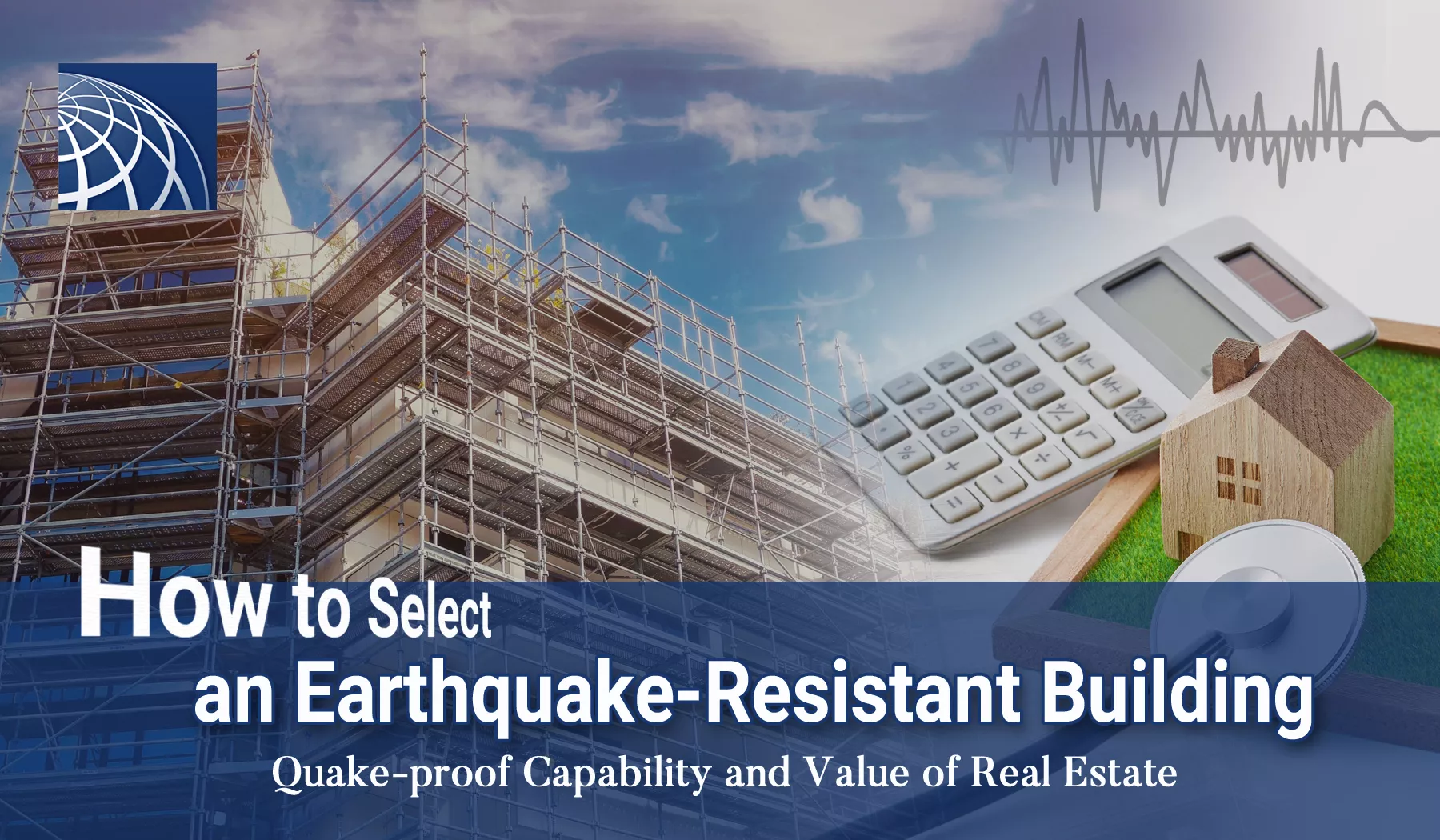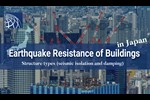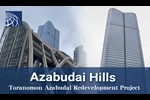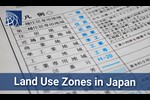How to select an Earthquake-Resistant Building - Quake-proof Capability and Value of Real Estate

When purchasing real estate in Japan, an earthquake-prone country, many people may be concerned about the risk of building collapse and damage due to earthquakes. Especially in recent years, we have experienced major earthquakes such as the Great East Japan Earthquake in 2011 and the Kumamoto Earthquake in 2016, and growing number of people are placing importance on the quake-proof capability of buildings when choosing their residences. We will explain here the points you need to know when choosing an earthquake-resistant building, characteristics of buildings that can continue to live without damaging the value even if an earthquake occurs, and your necessary preparation for an earthquake.
1. To choose a building that meets the new earthquake resistance standards

Based on the lessons learned from the past earthquake damages, the Building Standard Act has been—and always will be—strictly reviewed in Japan to ensure that buildings can withstand earthquakes. In particular, the standards were significantly revised in June 1981, and so the buildings constructed with building certification on or after June 1, 1981, are called the buildings that meet “the new earthquake resistance standards” and the other buildings that received building certification before June 1981 are called the buildings that meet “the old earthquake resistance standards” to distinguish the quake-proof capability of buildings.
The old earthquake resistance standards meet “the Level of Earthquake Resistance that buildings do not collapse in an earthquake of JMA seismic intensity scale 5”, but the new earthquake resistance standards have been strengthened to meet “the level of Earthquake Resistance that buildings are hardly damaged by an earthquake of JMA seismic intensity scale 5 and also the level of the same that buildings do not collapse in an earthquake of JMA seismic intensity scale 6 to 7”.
In the recent major earthquake that recorded JMA seismic intensity scale 7, many of the buildings that meet the new earthquake resistance standard did not collapse and reduced the damages significantly. Since major earthquakes with JMA seismic intensity scale 7 are predicted in the future, we highly recommend that you choose a building that meets the new earthquake resistance standards when you think about the risk of earthquakes.
As of 2022, buildings that meet the old earthquake resistance standards and were built before 1981 are more than 40 years old, and many of such old properties are currently being sold in the market. The reason is that not a few people find out there are some advantages of such old properties because of the following reasons; their prices are less expensive than the local market price, their locations are good (such as a location near a train station where houses cannot be newly built), and their conditions are good (such as a house for sale after full renovation by a real estate company, which you can live immediately). If you are interested in the property that meet the old earthquake resistance standards, please keep the following points in mind.
Points to note when you choose buildings that meet the old earthquake resistance standards

1. May not be eligible for Housing loans
Buildings that meet the old earthquake resistance standards are at risk of collapse due to earthquakes and it may be difficult to recover the loan balance by selling them when foreclosing them, so collateral valuation by financial institutions may be lower and possible loan amount may be limited. Please note that some financial institutions may not provide loans to such buildings that meet the old earthquake resistance standards.
2. May not be eligible for Housing Loan Tax Exemption
Even if you can take out a housing loan, you may not be able to have a tax deduction called “Housing Loan Tax Exemption”. Housing Loan Tax Exemption is the system in which 0.7% of the loan balance at the end of the year is deducted from your income tax for the period up to 13 years when you take out a housing loan for building a new house, buying a house, expanding, or renovating it, etc. The important requirement for Housing Loan Tax Exemption is that “the building should meet the current earthquake resistance standards”. In case of a building that meets the old earthquake resistance standards, it can be eligible for Housing Loan Tax Exemption if you can obtain a "Certificate of Conformity with Earthquake Resistance Standards" that certifies the quake-resistance performance of the building.
3. May not be eligible for various tax breaks
The requirement for other tax breaks such as for Real Estate Acquisition Tax and Registration and License Tax when purchasing a real estate property, is also that the building should meet the new earthquake resistance standards, or the building should be certified by a seismic diagnosis that it conforms to the new earthquake resistance standards in case of the one that meets the old earthquake resistance standards. So, you must be careful about the matter.
There is also a system in which a certain amount of gift tax is exempted when you receive financial support from parents or grandparents for acquisition of a house, but this tax break also requires conformity with the new earthquake resistance standards.
4. May be difficult to sell in the future
Since you may not be eligible for a Housing Loan as explained in 1, those who want to purchase a house by using a Housing Loan will not be “would-be buyers”, and they will be limited to those who can purchase with cash. When you cannot sell such a house to many and unspecified general consumers, you can ask a real estate company which also handles many houses that meet the old earthquake resistance standards. But in this case, there is a disadvantage that the selling price will be less than the market value.
5. Have a risk of aged deterioration
Reinforced concrete condominiums over 40 years old have a risk of aged deterioration such as internal crack and rebar corrosion of the concrete. There is also a risk of water leakage due to deterioration of water supply and drainage pipes, and accidents and abnormalities of the old common-use facilities.
6. Have a risk of problems with rebuilding
In Japan, a condominium can be rebuilt by agreement of the apartment owners, so in case of an old condominium there is a possibility that discussions on rebuilding among the apartment owners will begin in the near future. Although the useful life and the lifetime number of years for condominiums to be rebuilt has not been prescribed in Japan, the average age of condominiums rebuilt in the past is 33.4 years old nationwide and about 40 years old in Tokyo and Osaka. Rebuilding a condominium requires enormous expenses such as demolition and construction costs of the building, and it may also take several years to reach a consensus for rebuilding among the apartment owners.
For details: Reconstruction of an old apartment building – Rebuilt examples and problems
2. To choose a building that can continue to live even after a major earthquake

Although the effectiveness of the new earthquake resistance standards has been confirmed from the damage situation of buildings in the past earthquakes, the force of the earthquake is transmitted directly to the building. So if earthquakes occur repeatedly, the building may be seriously damaged even though it comes with earthquake-resistant structures.
Points to choose wooden buildings
The 2016 Kumamoto Earthquake was an unexpected earthquake because a major earthquake with seismic intensity scale 7, which is said to occur about once every few hundred years, occurred twice in the same place. Looking at the damage situation of wooden buildings in Mashiki-cho, where the damage to buildings was remarkable due to the Kumamoto Earthquake, even among the buildings that meet the new earthquake resistance standards, the collapse rate of the buildings constructed before the revision of the building standards in June 2000 was 8.7%, while the collapse rate of the buildings constructed after the same revision of the building standards was 2.2%. Buildings with Seismic Grade 3 of Housing Performance Labeling System were not so much damaged, and 87.5% of them were not damaged.
(See Damage caused by the 2016 Kumamoto Earthquake)
For these reasons, when selecting houses that can withstand repeated earthquakes in earthquake-prone Japan, buildings constructed after the revision of the Building Standards Law in June 2000 have a lower risk of collapse, and furthermore, it can be said that Seismic Grade 3 of Housing Performance Labeling System is an effective indicator for objectively evaluating high quake-proof capability of buildings.
Points to choose condominiums (reinforced concrete structures)
Reinforced concrete structures, which are common in condominium buildings, are said not to collapse even in a major earthquake if the buildings meet the new earthquake resistance standards, but there is a possibility that a part of such buildings will be damaged and large-scale repairs and rebuilding may be necessary. To choose an apartment with higher earthquake resistance capability, we recommend that you consider choosing condominiums which have acquired Seismic Grade 2 or higher, or condominiums that have seismic isolation structures, damping structures, and other earthquake-resistant structures.
Seismic isolation structure
This structure reduces earthquake vibration by seismic isolation devices (isolators) which are inserted into the foundation of the building to prevent seismic ground motion from being transmitted to the building. When an earthquake occurs, the building shakes horizontally due to the function of the seismic isolation devices, making it difficult to damage the building and requiring less repair work after the earthquake. Since the shaking of earthquakes is reduced, it has also a feature that can suppress furniture tip-overs.
You have to note, however, that the construction costs are higher than earthquake-resistant structures and damping structures, and periodical inspections and maintenance works of the devices are required, resulting in higher maintenance and management costs. Other precautions are the shaking caused by strong winds and continuous shakes for a long time depending on how the earthquake shakes.
Damping structure
It is a structure in which seismic damping devices such as oil dampers are installed in the building to absorb earthquake energy and reduce the shaking of the buildings. Since the shaking of an earthquake is transmitted to the building, the shaking of the building is larger than that of a seismic isolation structure, but the seismic damping devices reduce the shaking, and damages such as cracks in the building are likely to be less than those in the building with an earthquake resistant structure. The structure is also characterized by being more resistant to repeated earthquakes than other quake-resistant structures because the essential parts of the building structures are likely to be not damaged. Seismic damping devices also require periodical inspections, but less maintenance works.
For details: Earthquake Resistance of Buildings in Japan - Structure types (seismic isolation and damping)
3. To prepare for damage from earthquakes

Even an earthquake resistant building has possibility of damages if a major earthquake occurs.
If your house is damaged due to an earthquake, you may be required for rebuilding or a large-scale repair. In addition, you may have to bear unexpected expenses such as renting a temporary residence. Earthquake insurance helps you cover such economic burdens caused by the damages from an earthquake. If you have an earthquake insurance, you can receive insurance money according to the damage situation.
If you have difficulty in rebuilding your life when you have lost your house or household belongings due to an earthquake, etc., if you have a housing loan balance, or if you live in an area with a high risk of earthquakes, you will feel secure if you buy an earthquake insurance as a preparation for earthquakes.
For details, please refer to What is Japan Earthquake Insurance for Earthquake Preparedness?

- Rental Apartments & Houses in Tokyo
- Listings of popular and luxurious rental apartments, condominiums, and houses designed with expats in mind.

- Apartments & Houses for Sale in Tokyo
- Listings of apartments, condominiums, and houses available for purchase in Tokyo.



























